You should always buy a new car seat, if possible. It is one of the few things that you should go out and buy new for your baby as it can keep him or her safe in a car accident. However, there are some times where you may want to borrow a car seat from a rental car agency because you are on vacation or you simply cannot afford a brand new car seat. All car seats that have been in a car accident need to be replaced, even if not visually damaged – this is something that you can get compensation for through your own insurance if you have comprehensive coverage or through the person that caused the car accident when negotiating the property damage portion of your car accident injury case.
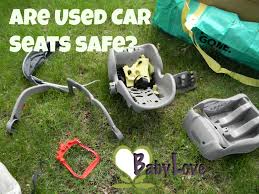 If you are going to borrow or buy a used car seat, you should verify that the car seat has not been in a car accident, is not over 6 years old, has not been recalled by the manufacturer, comes with the original manufacturer number and instructions, and has no visible damage or missing parts.
If you are going to borrow or buy a used car seat, you should verify that the car seat has not been in a car accident, is not over 6 years old, has not been recalled by the manufacturer, comes with the original manufacturer number and instructions, and has no visible damage or missing parts.
Verify The Age of The Car Seat
Do not buy a used car seat unless you can verify the age of the seat. Most car seats have a manufacturer’s label on the back or bottom of the car seat that gives the manufacture date or a specific expiration date. Harnessed car seats generally last 6 years from the date of manufacture, unless there is a different expiration date marked on the seat.
Verify Expiration Date By Calling Manufacturer
If you’re not sure about the expiration date, call the manufacturer. The date of manufacture and manufacturer contact information must be on one of the seat labels by law. If the labels are missing from the car seat, it’s best not to use it, as the labels would also give you important model information that would alert you to potential recalls.
Check to See if There Has Been a Recall
Check to see that your car seat has not been recalled for some reason. You cannot use a car seat that has been recalled. The National Highway Traffic Safety Administration (NHTSA) have a website that shows all of the recent recalls for car seats.
A Car Seat In a Car Accident Needs to Be Replaced
NHTSA and manufacturers encourage replacement of car seats if there was a car accident in moderate to severe car accidents. They used to encourage getting a new car seat in every car accident but they lowered their standards recently because some people were unable to buy a new car seat and newer car seats are much stronger than car seats used to be.
The NHTSA has recently lowered their standard for determining whether a car seat needs to be replaced in a minor car accident. The NHTSA dictates that a crash is considered minor if it meets all five of the following criteria:
• There is no visible damage to the car seat that might have been caused by the crash.
• The vehicle was capable of being driven from the crash site.
• The car door nearest to the child restraint was undamaged.
• No one in the vehicle was injured in the crash.
• The air bags did not deploy.
However, you probably won’t be able to get all this information from someone that is selling you a used car seat because they may be untruthful or may not have any information about the car accident. It is hard to determine whether a car seat was involved in a serious car accident or not just by looking at it because it may show no visible signs of being damaged.
Original Parts All Intact
You must also determine whether used car seats still have all of the original parts needed for safety. Some parts can be lost over time. One illustration of this is a harness on a combination seat that is removed when the child outgrows it, and is later replaced without a seemingly small piece that affects the function of the harness in a crash.
Insurance Will Pay For a New Car Seat in a Seattle Car Accident
If you have been injured in a Seattle car accident, you should make sure your car seat is replaced and covered in the car accident by the insurance company. Call a Seattle personal injury lawyer today to make sure you get a new car accident included in your car accident injury case.
 If someone is hit as a pedestrian by a car at a non crosswalk area, they can still recover damages from the driver of the other car. Washington State is a comparative fault state so the jury would weigh what percentage of fault each person had for the pedestrian being hit. The pedestrian could be at fault for jumping in front of the car and the car could be at fault for speeding or not paying attention to the road ahead of them. Additionally, the pedestrian would then recover for the personal injury damages they suffered due to the car accident, offset by the percentage they were at fault and the damages they caused to the driver of the car.
If someone is hit as a pedestrian by a car at a non crosswalk area, they can still recover damages from the driver of the other car. Washington State is a comparative fault state so the jury would weigh what percentage of fault each person had for the pedestrian being hit. The pedestrian could be at fault for jumping in front of the car and the car could be at fault for speeding or not paying attention to the road ahead of them. Additionally, the pedestrian would then recover for the personal injury damages they suffered due to the car accident, offset by the percentage they were at fault and the damages they caused to the driver of the car.
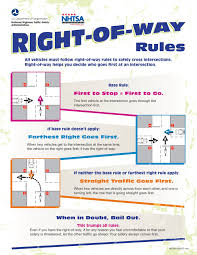 There is no law about “T-intersections” in Washington State. Therefore, in order to determine who has the right of way, we must look at other laws. The right of way law at an uncontrolled intersection is governed by RCW 46.61.185. It states that the car on the right is the favored driver if both cars enter an intersection at approximately the same time. This means that the car on the right at an uncontrolled T-intersection would have the right of way. This assumes that there are no stop signs or yield signs governing the intersection, which there most likely would be.
There is no law about “T-intersections” in Washington State. Therefore, in order to determine who has the right of way, we must look at other laws. The right of way law at an uncontrolled intersection is governed by RCW 46.61.185. It states that the car on the right is the favored driver if both cars enter an intersection at approximately the same time. This means that the car on the right at an uncontrolled T-intersection would have the right of way. This assumes that there are no stop signs or yield signs governing the intersection, which there most likely would be.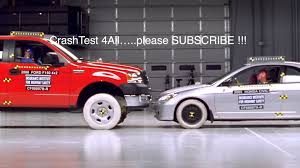 The law of physics dictates that SUVs are safer because of the higher center of gravity due to the larger size and weight creating more force and less likely to be moved by a smaller sedan. This is the same reason that buses do not have seat belts on them. Buses do not have seat belts because manufacturers of the buses believe that the high center of gravity makes them extremely unlikely to be impacted strong enough by other cars to make much of an impact on the passengers inside them.
The law of physics dictates that SUVs are safer because of the higher center of gravity due to the larger size and weight creating more force and less likely to be moved by a smaller sedan. This is the same reason that buses do not have seat belts on them. Buses do not have seat belts because manufacturers of the buses believe that the high center of gravity makes them extremely unlikely to be impacted strong enough by other cars to make much of an impact on the passengers inside them.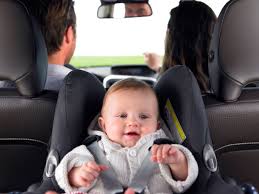 The optimal position to keep children away from harm in a car accident is reversed in a car seat in the middle position. This is because the reverse facing car seat will protect children in case of a front end head on collision. A head on collision with a rear facing car seat will have the car seat actually cradle the body and head of the baby versus the baby’s head, arms, and feet flailing with a forward facing car seat.
The optimal position to keep children away from harm in a car accident is reversed in a car seat in the middle position. This is because the reverse facing car seat will protect children in case of a front end head on collision. A head on collision with a rear facing car seat will have the car seat actually cradle the body and head of the baby versus the baby’s head, arms, and feet flailing with a forward facing car seat. If you are going to borrow or buy a used car seat, you should verify that the car seat has not been in a car accident, is not over 6 years old, has not been recalled by the manufacturer, comes with the original manufacturer number and instructions, and has no visible damage or missing parts.
If you are going to borrow or buy a used car seat, you should verify that the car seat has not been in a car accident, is not over 6 years old, has not been recalled by the manufacturer, comes with the original manufacturer number and instructions, and has no visible damage or missing parts.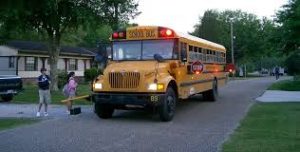 According to
According to 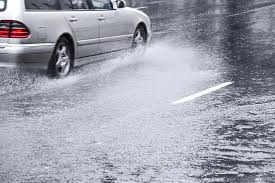 Sliding out or hydroplaning in the rain, is a term that describes cars losing traction with the ground. A car generally loses traction to the ground in wet weather where the car is driving too fast for conditions and there is too much water on the ground.
Sliding out or hydroplaning in the rain, is a term that describes cars losing traction with the ground. A car generally loses traction to the ground in wet weather where the car is driving too fast for conditions and there is too much water on the ground.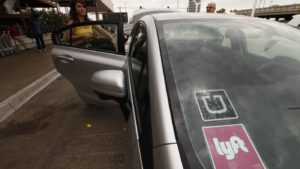 It is actually illegal for Uber and Lyft drivers to put on their hazard lights and stop in the middle of the road to allow passengers in or out of their car. This requires a fine and is a moving violation not a parking violation.
It is actually illegal for Uber and Lyft drivers to put on their hazard lights and stop in the middle of the road to allow passengers in or out of their car. This requires a fine and is a moving violation not a parking violation. You can get a ticket for a secondary offense called dangerously distracted driving if you are doing any activity not related to driving that in the officer’s view interferes with driving safely, which includes smoking a cigarette. If an officer sees you make an illegal lane change, drive in an erratic manner, speed, run a stop sign, cause a car accident, fail to yield to a pedestrian, run a red light, or commit any other traffic stop worthy offense, you can be ticketed for an additional penalty if you were smoking a cigarette and the officer believes this contributed to your distraction.
You can get a ticket for a secondary offense called dangerously distracted driving if you are doing any activity not related to driving that in the officer’s view interferes with driving safely, which includes smoking a cigarette. If an officer sees you make an illegal lane change, drive in an erratic manner, speed, run a stop sign, cause a car accident, fail to yield to a pedestrian, run a red light, or commit any other traffic stop worthy offense, you can be ticketed for an additional penalty if you were smoking a cigarette and the officer believes this contributed to your distraction.